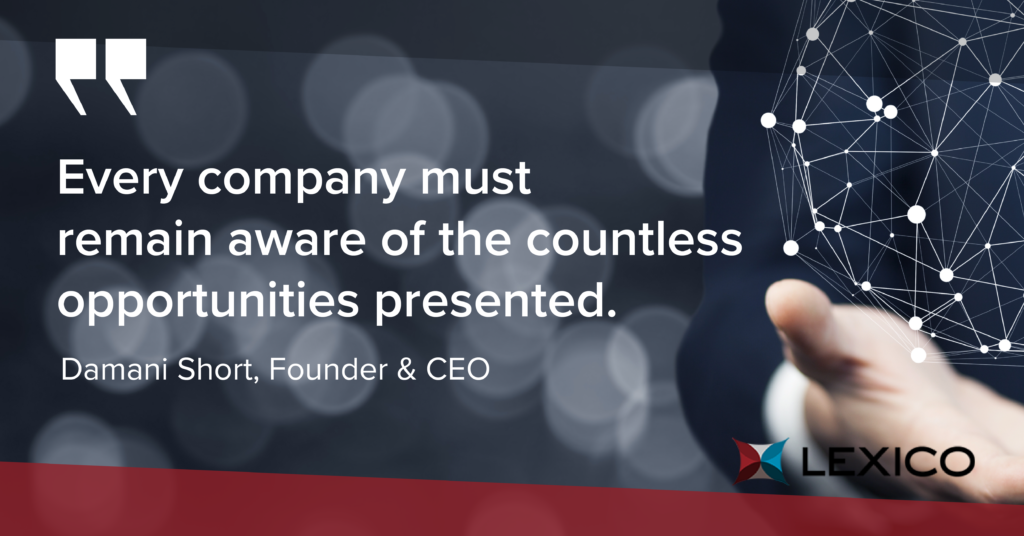By Damani Short

What is Digital Transformation?
Digital transformation is the process of using technology to create better customer experiences and more effective business operations. It’s not just about the latest technology, but rather using technology as a tool to build new capabilities that can be applied across the company. The most successful companies are those who have been able to establish a long-term vision, coupled with an ability to find ways to embed it into their business models.
There are many types of digital transformation, each with its challenges and benefits:
Business Model Transformation – refers to changes in the way an organization creates value for its customers and generates revenue from those customers. This involves looking at how your business model works in its current form and how it might work differently if there were new technologies or capabilities available.
Process Transformation – Processes can be improved through automation and better use of technologies like data analytics and artificial intelligence (AI) to automate processes, reduce costs and improve efficiency.
Organizational Transformation – A process in which an organization changes its culture and structure to align with its strategy. The transformation involves the infusion of new attitudes, behaviors, and capabilities that allow the organization to succeed in a new environment.
Domain Transformation – This process entails the introduction of new technology solutions that improve efficiency, data analysis capabilities, and customer relationship management. It helps organizations understand what needs to be done to transform their business model and design processes so they can respond more effectively to market opportunities and challenges.
The 4 Tiers of Digital Transformation
If you’re a leader in charge of a transformation, learning from other companies’ use of digital technology can provide guidance – and inspiration.
The key is embracing new technologies and changing the way work is done. With a focus on cloud computing, robotics, artificial intelligence (AI) and Internet of Things (IOT), businesses are able to improve productivity, reduce costs and increase revenue.
Here are the four examples of how Ford Motor Company, Caterpillar, GE and Peloton have used digital technology to make smart investments and gain competitive advantage.
Tier One: Operational efficiency.
Ford uses augmented and virtual reality, the Internet of Things (IoT) and AI to implement a new automated vision-based inspection of paint jobs in its plants. In this case, new technologies generate data from factory assets, which AI uses to detect and prevent manufacturing defects in real-time.
Tier Two: Advanced operational efficiencies.
Caterpillar installs sensors on its construction equipment to track each piece of equipment used on a сonstruction site. It discovers, for example, that customers use their motor graders to level lighter gravel more often than to level heavier dirt. Using this insight, Caterpillar introduces a low-cost motor grader primarily intended to level gravel rather than dirt.
Tier Three: Value chain data-driven services.
GE monitors product-sensor data from their jet engines, analyzes it with AI, and provides real-time guidance to pilots on how to fly to maximize fuel efficiency. GE then appropriates a portion of their customers’ cost savings via new annuities derived from “outcome-based” revenues. This does more than just improve operational efficiency because it generates new revenue streams.
Tier Four: Data-driven services from digital platforms.
Peloton uses product-sensor data from its exercise equipment to build a user community and match individual users with appropriate trainers. That is quite similar to how Uber matches riders with drivers using data from their apps. As a result, like GE in the previous example, Peloton generates new revenue from its data-driven services — but this time by expanding its products into digital platforms.
Digital Transformation ROI
Explain the outcomes of using these tiers. How is the success of digital transformation measured? How do these tiers address/track that? How is data dealt with at these tiers.
Choosing a Digital Transformation Strategy
Of course, not every company will want or be capable of engaging in all four tiers of transformation. Some may choose to focus on just one or a few, but every company must remain aware of the countless opportunities presented. “Digital Transformation” means different things to different leaders. Digital transformation requires a business-centered technology approach and each of those businesses can be vastly different. Explain what kind of company would benefit from each of these tiers and how a company should choose the right one.
If you’re looking for assistance in successfully navigating a digital transformation, contact Lexico.
